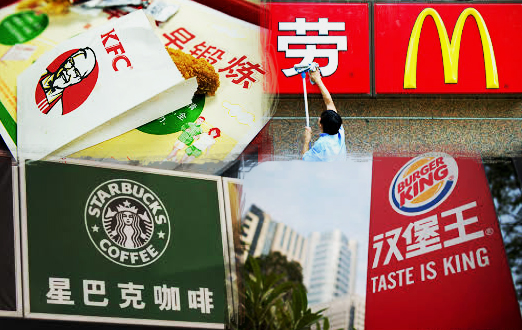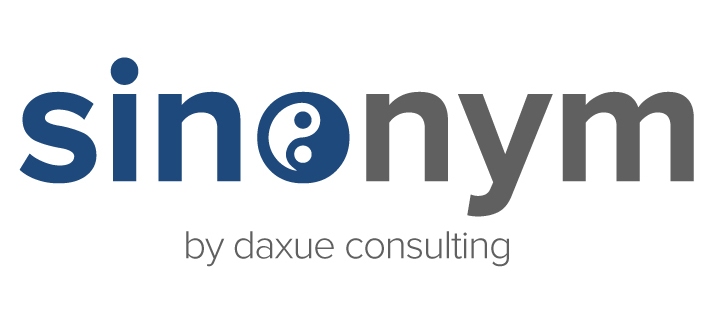Generate relevant and localized company names in China
In China brand evolve in a constantly changing environment. Does the perception of the company or the brand correspond to the initial expectations? Does the implemented strategy produce the expected results ? Simply speaking, is my brand name well-adapted and localized in China ?
Creative research alternates brainstorming and analysis phases of holdings. While the international network Sinonym provides accurate insight of cultures, languages and legal environments involved through its brand naming process. Sinonym brand identity strategic planning comes to articulate these critical issues between the phases of briefing and creation.
If choose is to renounce, to create is to include: prior to starting the naming process, Sinonym emphasizes on the preparation with the client in order to grasp the full identity of the brand make sure the brand vision and characteristics are well represented in the name.
Sinonym’s brand identity process defines and clarifies the architecture of a brand portfolio to ensure the consistency of its articulation. This indispensable rationalization rely on a triptych:
- The analysis of the current organization and its environment and competition leading to the creative brief.
- The creative brainstorming and Chinese name generation process, including ranking and scoring.
- The legal, linguistic and market acceptance validation.
Naming preparation and creative brief
 Sinonym will leverage the data-collection and research methodology of its parents’ company Daxue Consulting to provide the needed information to optimize the future creative brief and brand name generation in China. The purpose is to use the most up-to-date information about:
Sinonym will leverage the data-collection and research methodology of its parents’ company Daxue Consulting to provide the needed information to optimize the future creative brief and brand name generation in China. The purpose is to use the most up-to-date information about:
- Industry – recent trends, industry basic dynamics, and factors with impact on demand.
- Customers – profile, needs, expectations and effective ways to reach them.
- Competitors – types of name, message they wish to convey, and logo.
The understanding of the competitive environment of the company and its brands influences its progress. Without this essential development perspective, how to define a pertinent positioning of the company in a direct and indirect marketing environments ? Sinonym’s brand identity competitive studies rely on a careful analysis of the messages sent by the main actors of the market, then expand to other fields with similar issues.
In the same time, our time will rely on information provided by the client and setup some workshops to extract:
- The brand’s global and China strategy– the core identity, the main message to convey, objectives in China and target consumers.
- Restrictions and special requirements- the importance of phonetic similarity, importance of meaning, importance of foreign origin.
- Preferred type of name- Phonetic, literal, descriptive or evocative translation.
All the collected information and the client’s requirements will be arranged into a comprehensive Creative Brief. The Creative Brief includes an analysis of competitors’ naming strategy and of the client’s brand essence.
The process of creating a Chinese brand name
Our creative team will read and analyze the Creative Brief in order to get a comprehensive understanding of the Client’s identity and the main naming strategies used in China in its industry.
Based on our Creative Brief, our Chinese language creative experts will brainstorm and generate as many keywords as possible as well as words and sentences which describe the identity of the products. This first material will be ranked and scored according to the following criteria:
- Convey or not client’s brand positioning in China.
- Convey or not the identity of the brand.
- Difficulty level for pronunciation in Chinese.
- Phonetic similarity to client’s global name.
- Easy or not to remember for Chinese consumers.
Sinonym’s brand naming team objective is to gather and sort a list of at least 20 names for the brand and for the sub-brands. The 3 following type of Chinese naming methods will be considered and included in the final list:
-
 Phonetic translation:
Phonetic translation:
- Find and list Chinese characters that are close to the original pronunciation and easy to pronounce for the Chinese target consumer.
- Gradually narrow down the list by finding characters that convey the brand image the best.
- Existing examples: McDonald’s= 麦当劳 (mai dang lao), Subway= 赛百味 (sai bai wei), etc.
- Literal translation:
- Find the characters that most closely translate the meaning of the original name.
- Existing examples: Burger King= 汉堡王 (han bao wang), Apple= 苹果 (ping guo), etc.
- Descriptive or evocative translation:
- Find a Chinese name which is more descriptive or evocative of the brand’s identity.
- A phonetic or literal translation is often meaningless in Chinese characters, hence the need to come up with alternative characters that will help the target consumer understand the brand.
- Existing examples: Ariel= 碧浪 (bi lang= green wave), Pizza Hut= 必胜客 (bi sheng ke= definitely traditional), etc.
Legal, linguistic and market acceptance validation of the Chinese brand names
When we narrow down the list of potential names to the 5 most interesting prospects, a thorough report including the availability to register names, explanations, limitations, and linguistic verification of names in several Chinese dialects is written by Sinonym.
Check whether the company name is linguistically appealing in the main Chinese dialects. A Chinese company name may sound good in one dialect but terrible in another…
- A company name must be acoustically appealing in order to create positive associations with the target consumer.
- The pronunciation of the Chinese company name should sound good in several dialects (Mandarin, Cantonese, Shanghai dialect, English, etc.).
- Most importantly, the pronunciation of the Chinese company name is must be as far away from a negative word or concept as possible.
Finally, Sinonym will – as in the early stages of the process of naming – leverage the research and market survey capabilities of its parent Daxue Consulting to conduct market surveys aiming at challenging the final name with the end-customers. This process should definitely validate the relevancy and positive values conveyed by your new Chinese company name. It can be done through 2 methods, qualitative or quantitative:
- Focus Groups – Organize a focus group with industry experts and/or final consumers to test the list of interesting names and narrow it down to one or a couple of ideal names.
- Market survey – Conduct survey of target consumers to test and select best names and highlight statistical trends that will validate the best choice of Chinese company name significantly.

